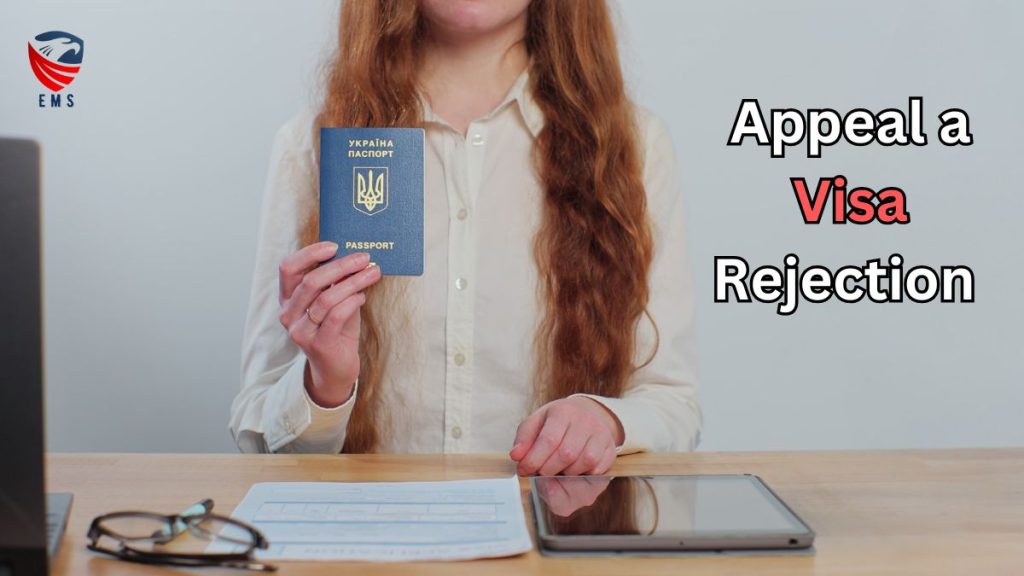Introduction
When a visa application is rejected, it can feel discouraging, especially if important planning, expenses, and hopes are tied to the application. However, a rejection doesn’t always state a final decision; most visa regimes give a pathway to appeal.
By carefully following the significant steps, applicants can create an enthralling appeal and increase their chances of gaining approval.
How to appeal a visa rejection
Here’s some pointers on how to appeal a visa rejection effectively.
Step 1: Know the Reason for Rejection
The initial step in addressing a visa rejection is to understand why it was rejected. Visa usually gives a written explanation of the decision, citing selective grounds for denial.
Common reasons include insufficient financial evidence, incomplete documentation, absence of ties to the home country, or doubts about the reason for the visit. Understanding these grounds is crucial to shaping your appeal.
Take time to read the denial notice properly, and if anything is unclear, contact the embassy or consulate for clarification. In some cases, you might be able to spot an obvious error or misunderstanding, which can be a firm basis for your appeal.
Step 2: Determine the Best Approach
Following a visa rejection, there are usually two pathways of how to appeal a visa rejection: filing an appeal or reapplying. In most cases, appealing is the more cost-effective option, as it addresses the resolutions directly, generally with the same embassy or consulate.
However, depending on the rejection’s grounds and the country’s immigration policies, reapplication might be preferable if substantial amendments can be formed to strengthen the application.
Be sure to research the selective policies for the country in question, as some nations have fixed rules on how most times, and under what conditions appeals are permitted.
Step 3: Collect Strong Evidence
The next step is to collect add-on documentation and information that addresses the reason(s) for the starting rejection. If, for example, the visa was rejected due to insufficient financial resources, give bank statements, proof of stable income, or a sponsor’s financial affidavit.
If the rejection was due to a perceived lack of ties to your home country, collect documentation that formed these ties—such as a stable job, property ownership, or family responsibilities. Incorporate any new or previously unsubmitted documents that support the intended reasons for your visit.
Step 4: Write a Persuasive Appeal Letter
A well-crafted appeal letter is the cornerstone of your application. This letter should straightforwardly address the rejection reasons, explain any relatable circumstances, and give evidence that the issues have been correct.
Be clear, concise, and respectful in your tone. Describe your reason for visiting, the steps you have taken to address the issues raised, and why you believe you now fulfill the visa requirements.
It’s crucial to prevent being defensive or emotional in the letter; focus on giving facts and evidence. If possible, ask a legal expert or an immigration consultant to review the letter, as they can give insights to enhance effectiveness and clarity.
Step 5: Submit the Appeal and Wait
After assembling your documents and writing the appeal letter, submit the whole appeal package as per the embassy or consulate’s guidelines.
Most embassies need appeals to be filed within a selective time frame after the rejection, so be sure to file promptly. The review process can differ by country and might take several weeks or months. Prompt and Patient follow-up is significant here.
Step 6: Consider Professional Help if Necessary
If the appeal is difficult or includes sensitive legal matters, consulting an immigration lawyer or visa professional can be a good investment. Professionals have experience directing visa rejections and can give customized advice that increases your chances of approval.
Conclusion
While how to appeal a visa rejection is a setback, an appeal can give you a second chance. By knowing the reasons for rejection, fact-based appeal, collecting compelling evidence, and forming a respectful, applicants can usually overcome the starting denial. So get in touch with EMS Visa Consultant who is an expert in giving visa assistance services on how to appeal a visa rejection. Remember, thoroughness and patience are key.
With a well-prepared approach, you can enhance your opportunity of turning a “no” into a “yes.”



